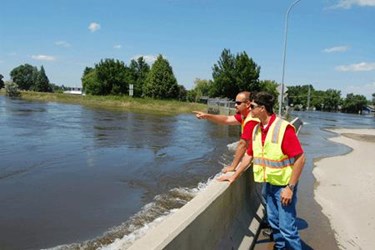What's Ahead In Water
By Jerome Devillers, Mazars USA
Water made headlines over the past year, with the major contamination discovery in Flint, MI, droughts and then flooding in California, and questions about infrastructure. These headlines highlight how vital water is to the U.S. economy and the American people, as well as the challenges the industry faces. What’s not in these headline stories, though, is how the industry views its future.
It’s clear that many water industry stakeholders are feeling the tension between managing today’s financial challenges while addressing the serious infrastructure development needs of the future. According to our recent Outlook survey — which gathered insights from executives throughout the water industry — 39 percent of respondents estimate fewer than 10 years of remaining useful life for their water mains. Another 21 percent estimate between 10 to 20 years of remaining useful life. More than one-third (37 percent) of respondents are currently located in water-supply-challenged areas of the U.S., with expectation that this will rise to 46 percent over the next 10 years. Despite this, capital expenditure (CAPEX) spending that could pay for system repairs and replacements remains somewhat limited, with 29 percent of respondents planning no increases over the next year.
Not all respondents are holding back, though. More than half (53 percent) indicated they planned to increase CAPEX spending in the coming year, with 27 percent planning to increase by more than 10 percent. Survey feedback indicates that more respondents would be interested in increasing CAPEX spending, but they see challenges to securing the financing needed.
While respondents’ opinions on availability of capital varied, the issue may come down to understanding the risks. Even with plenty of available capital, there are few projects that are attractive from a risk and return perspective. In spite of the support of programs such as the Water Infrastructure Finance and Innovation Act (WIFIA) and the Water Infrastructure Improvements or the Nation Act (WIIN), projects have been very slow to move forward. This may be due to need for greater transparency on the risks and benefits of projects. When asked which reporting standards for water companies should be enhanced, respondents ranked financial reporting disclosures for CAPEX programs and environmental/compliance risks the highest.
Respondents that are making investments are likely focusing on energy-efficiency improvements and projects. This year, our respondents rated energy-efficient advanced water treatment technologies as a top factor in bringing benefits to the industry. Nearly half (44 percent) are employed at organizations that have implemented an energy-efficiency program in the last three years, while the rest (56 percent) are now assessing energy-efficiency strategies. They are focusing on advances in three areas of technology:
- Energy-efficient advance water treatment technologies;
- High-efficiency aeration systems and pumping systems; and,
- Smart metering and data analytics.
These findings highlight the complex planning needed to continue to provide U.S. customers with an affordable, sufficient, and safe utility. Securing the water industry’s future demands that we continue to plan around balancing many factors, including public opinion, economic trends, environmental impact, regulations, and more.
For more information on the Mazars 2017 U.S. Water Industry Outlook, visit http://mazarsusa.com/industries/water/
Image credit: "USACE Park Rangers observe the flooded Souris River," U.S. Army Corps of Engineers, 2011, used under an Attribution 2.0 Generic license: https://creativecommons.org/licenses/by/2.0/
Copyright © 1996 - 2017, VertMarkets, Inc. All rights reserved. To subscribe or visit go to: http://www.wateronline.com
